Author: musicben.eth Translation: Jazzy
Dear music lovers, in 2020, a concept called “Money Legos” started to become popular in the crypto community. It is a framework used to help people understand all the emerging DeFi tools and how they can be combined. I believe that the Web3 music industry is now also building a similar framework.
But instead of money, music is flowing through it.
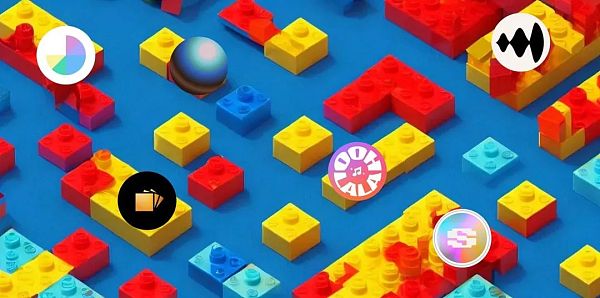
Original article link: https://ziggyziggymusic.substack.com/p/music-legos-the-simplest-way-to-explain
Web3 Music Education
This is our first formal “education” article, inspired by our friend Nikki Bean at Decent.xyz, who emphasized the need for simple explanations and introductory guidance for artists.
If you are an experienced player in the crypto industry, the content of this article may be too simple for you, but I would also appreciate your feedback.
So let’s get started.
Background
Web3 is often seen by music professionals as a utopia, a revolutionary force, or a way to “fix” the music industry.
Here, you can have full control over your work, realize its true value, and receive generous returns.

NFT is also revolutionizing the music industry
This is very attractive to musicians who have historically been treated unfairly.
Personally, I agree with some of these views.
Web3 is not a utopia
Blockchain doesn’t have any magical powers, and it doesn’t automatically give artists control or money.
It’s just an open database.
Or you can think of it as a Lego baseplate where anyone can build and play.
Some artists can create extraordinary and incredible projects, far beyond what they could achieve in the Web2 era.
While others may be content playing in a small corner of the Lego baseplate.
In reality, Web3 is just a set of tools, and how you use them is entirely up to you.
LianGuaiRT 1
What exactly are music Legos?
Let’s start with different Lego baseplates
You can think of different blockchains as different Lego baseplates, such as Bitcoin, Ethereum, Solana, etc.
In general, there is not much connection between different blockchains (except for some crude Lego bridges).
They have different values, characteristics, builders, projects, and communities.
Bitcoin – a solid and secure Lego baseplate… but it’s quite difficult to build something on it.
Ethereum – the most popular Lego baseplate, many players are enthusiastic about participating in it and creating their own world.
Solana – it may be unstable (sometimes temporarily closed), but it is cheap and fast to build.
You can choose which Lego baseplate to start experimenting on.
(They are not well connected to other parts of the music industry, so for now, consider the Lego baseplate as your own island.)
What are the rules?
The blockchain is completely open.
Apart from the law, there are almost no rules.
This baseplate is open to everyone. It is very big, and millions of people have already played on it.
As you can see in our Music Ecosystem Map, hundreds of music companies have started building here.

If you add your own Lego bricks to the baseplate, others may also use them to build.
(We will come back to this point later.)
The Lego baseplate is open and transparent
You can see almost everyone’s wallet, balance, and transactions.
In many cases, the projects built here are open source, so you can see their code.
You can copy/paste their Lego bricks (commonly known as “forking”).
People can add their own Lego bricks to it and create something new.
“Composability”
The concept of Lego in the crypto circle is called “composability”.
Most of them can interact with each other.
They can be combined to create unexpected new things. This is what triggered the DeFi Summer in 2020 and launched the previous bull market.
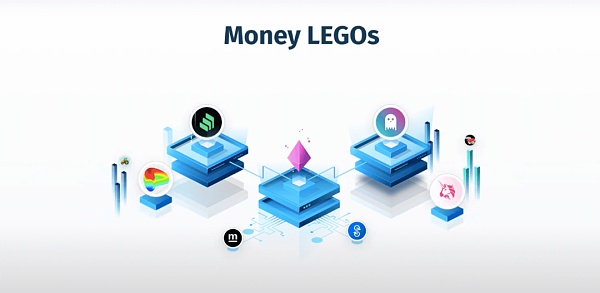
This is different from the traditional music industry
The traditional music industry is not open or permissionless.
It is a closed system.
For example, you cannot use Spotify’s data to build something without permission (using restricted APIs).
And the rules are fixed.
-
Price rule – $9.99 streaming subscription fee.
-
Transaction structure – 70/30 split, either accept it or give up.
-
Data opacity – very little information about your fans.
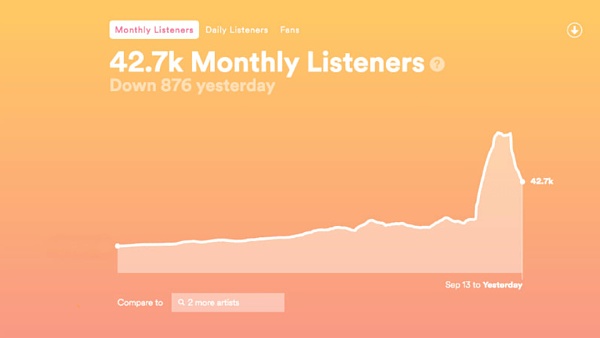
Unleash freedom in Web3
In Web3, you can freely publish content and earn revenue.
You can put your Lego on the baseplate and decide what to build.
And you can combine them with many other different projects.
It’s both terrifying and thrilling.
You can decide the price, supply, and release schedule by yourself.
It’s neither better nor worse… but it’s freedom at its most basic level.
And every musician has the right to choose how they release their music.
But this is not a particularly effective solution.
In fact, it may be more difficult because artists have to make the right choices and actively build something out of it.
Digital scarcity
Before we start adding Lego bricks, there’s one last thing to talk about…
We need to talk about digital scarcity.
All the bricks on the baseplate have true scarcity (this is the first time this has happened in a digital environment).
Because everyone can verify it.
If I add a Lego brick to the baseplate and pretend it’s a Snoop Dogg 1/1 collection worth a million dollars, everyone on the baseplate can easily find out that I’m lying.
Then my Lego brick is worthless.
All players can verify the real Snoop Dogg Lego, trace its origin, and who the owner is.
This is the premise of blockchain… and this model can only be achieved in a fully open environment.
Otherwise, we might as well go back to a central database.
That’s why open and permissionless experimentation is a fundamental idea that you must accept (regardless of good or bad).
LianGuaiRT 2
Add your Lego
Are you ready to add some Lego bricks to the baseplate?
Then let’s start adding Lego bricks to the baseplate, it’s called “minting” NFT.
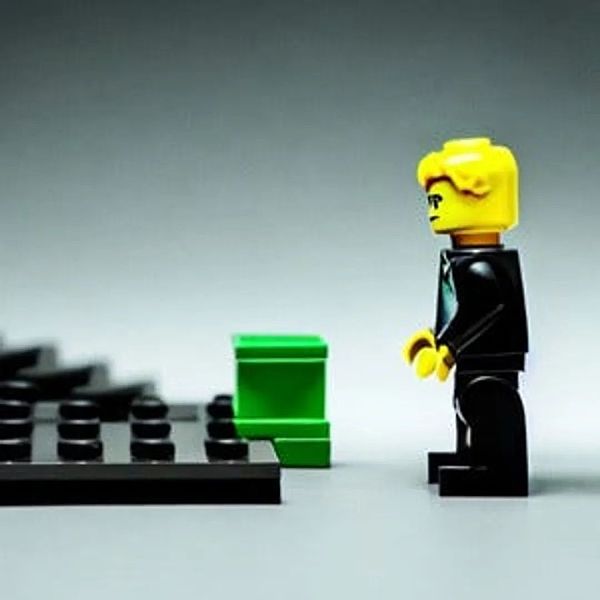
This is where “freedom” comes into play.
You can choose what your Lego looks like – whether it has music, art, or other features.
What is the cost of “collecting” it?
How many bricks do you want to put on the baseplate? A collection of 25 works? Or a unique 1/1 piece?
Does it have “utility” like getting streaming royalties?
Do you want to value it as an artwork? Or do you plan to give it away for free and build a community with it?
You can decide completely, there is no “right answer”.
Release your music at will. Set prices freely, choose any release time, try different types of releases, and unleash your creativity.
Choose carefully!
Accuracy is crucial in this part.
Once your Lego brick is placed on the baseplate, it cannot be taken back (this is called “immutability”).
It will operate on the baseplate according to the rules you set, without any interference.
This is also what makes it more difficult than traditional systems.
At least on Spotify, the price and distribution structure have already been set for you.
Now you need to decide on the price and supply based on market conditions and suggestions from your fans or collectors, which can be a bit challenging.
Collectibles
The most common scenario is that people put a price on their LEGO bricks so that others can collect them.
But this doesn’t mean that collectors have the right to own your created art or music.
It just means that they own one of the LEGO bricks you placed on the baseplate.
Think of it as sticking a sticker on a block, saying musicben.eth currently owns it.
There are many trading markets on those giant LEGO baseplates.
I can now go to one of them and try to sell it.
Adding new LEGO bricks
Over time, you can add more parts to the LEGO bricks.
Free airdrops? Backend access? Token-gate experience?
These can add more value to your LEGO.
Okay, so how do I put my LEGO on the baseplate?
There are two ways:
1. Start from scratch.
2. Use an existing castle on the baseplate.
DIY
You can directly create LEGO on the baseplate (using no-code tools like Zora, Decent, or Manifold).

Your LEGO is now in a super large game arena.
This is the most free option, but you have to do a lot of promotion yourself.
Apply to existing platforms
You can also apply to a music NFT platform (such as Sound, Catalog, Royal, etc.)
They will help you add your LEGO to the baseplate and provide you with some promotional support.
Benefits of the platform
Large music NFT platforms like Sound already have large castles in the LEGO world.
When you mint through Sound, your LEGO will be added to their castle, so it will be immediately visible.
Collectors have been wandering around Sound’s castle, and they are happy to find and collect your music.
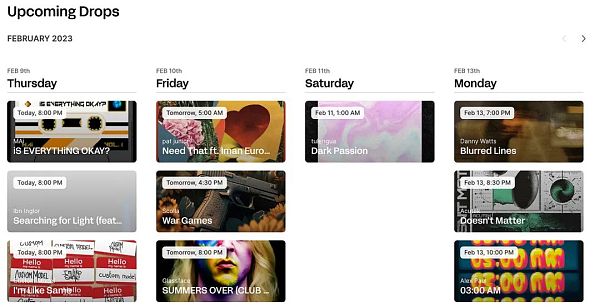
What about the drawbacks?
There may be some rules you have to follow on these platforms.
If you’re on Catalog, it needs to be 1/1.
If on Royal, you have to share streaming royalties.
Wait, isn’t this “permissioned”?
Yes…
You will always find more “centralized” castles on the “decentralized” Lego baseplate.
But it doesn’t matter.
What’s most important is that the base layer is open and permissionless for everyone.
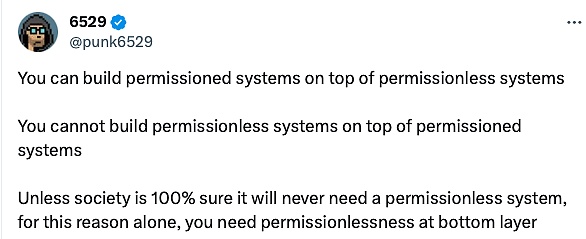
@punk6529: You can build permissioned systems on permissionless systems, but you can’t build permissionless systems on permissioned systems unless society can 100% determine that a permissionless system is not needed, in which case you need to incorporate permissionlessness at the base layer for that reason alone.
It’s worth noting that your Legos are minted through the platform, but you still have complete control over them.
Therefore, you should think of Sound and Catalog as “gateways” or “portals” to the blockchain, rather than “platforms” like Spotify.
Aggregators
Once your Lego is added to the baseplate, other players may want to use it to build.
In the corner of the baseplate, there’s a castle that “aggregates” all the music Legos, like SpinAmp, Future Tape, or Ooh La La.
They want everyone to see how amazing the Legos are, so they built a castle to put them all in one place.
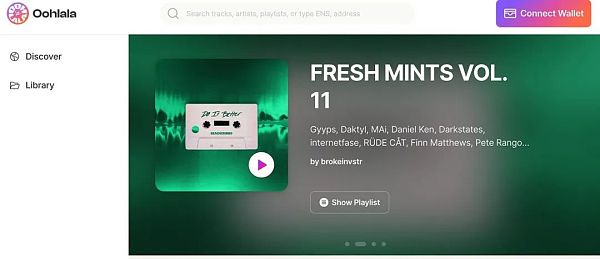
Collectors know they can go to these aggregator castles to find cool music.
If your Legos don’t have rules that restrict this, aggregators can add your Legos to their castle.
Collectors may add it to their metaverse galleries.
This could be a good thing. A bigger castle can help your Legos gain more recognition.
And you still retain all the fundamental rights.
What does all this mean?
What I’m trying to say is that blockchain is open and permissionless.
It’s the only true “spirit” built into the technology.
Adding your Legos to the baseplate means you’re signing up for this experiment.
Without it, nothing works.
Sometimes this means people will do things with your Legos that you don’t like. And they may not ask for your permission.
Less control for artists?
For many artists, this may make you feel like you’re losing some control in Web3.
Your music will be traded on the open market, appearing in the metaverse and aggregators.
Over time, we’ll find new ways to capture all the value and adopt permissioned models, but in the short term, its development *will* outpace the regulation and permission of traditional institutions.
It’s just a trade-off you have to make.
Web3 is a playground (an experiment)
All of this means that artists have a greater opportunity to achieve true creative freedom and unlock more money.
But I believe that “utopia” or “fix” is the wrong way to describe what Web3 offers.
Instead, you should see it as part of a crazy experiment and accept the possible outcomes.
More frequently asked questions?
What is music exactly?
By the way, music is not usually in your Lego blocks.
Instead, Lego usually contains a link to your music, which is stored on an external server (IPFS) or permanent storage (Arweave).
Compared to regular servers, blockchain is slow and expensive, so it is costly to put a large amount of data on the chain.
The law is still the law
Although blockchain is permissionless, you still need to comply with real laws.
This includes copyright law.
You cannot create NFTs with music or art that does not belong to you.
And it is almost certain that companies building streaming tools, broadcasting players, and aggregators in this space will still need to pay royalties. This is a challenge we will eventually face.
NFTs will not have an impact on human psychology
Remember that Web3 and blockchain cannot magically solve all human problems.
The laws of psychology will not change.
There will still be power monopolies, influencers, trends, and forces driving market development.
In fact, in this less regulated free market, these forces can be further magnified.
It may lead to extreme situations
On the one hand, Web3 is very democratic and inclusive because there are no restrictions at the base layer.
However, for the same reason, it could also evolve into extreme capitalism.
Keep this in mind as you explore this world.
Like what you're reading? Subscribe to our top stories.
We will continue to update Gambling Chain; if you have any questions or suggestions, please contact us!